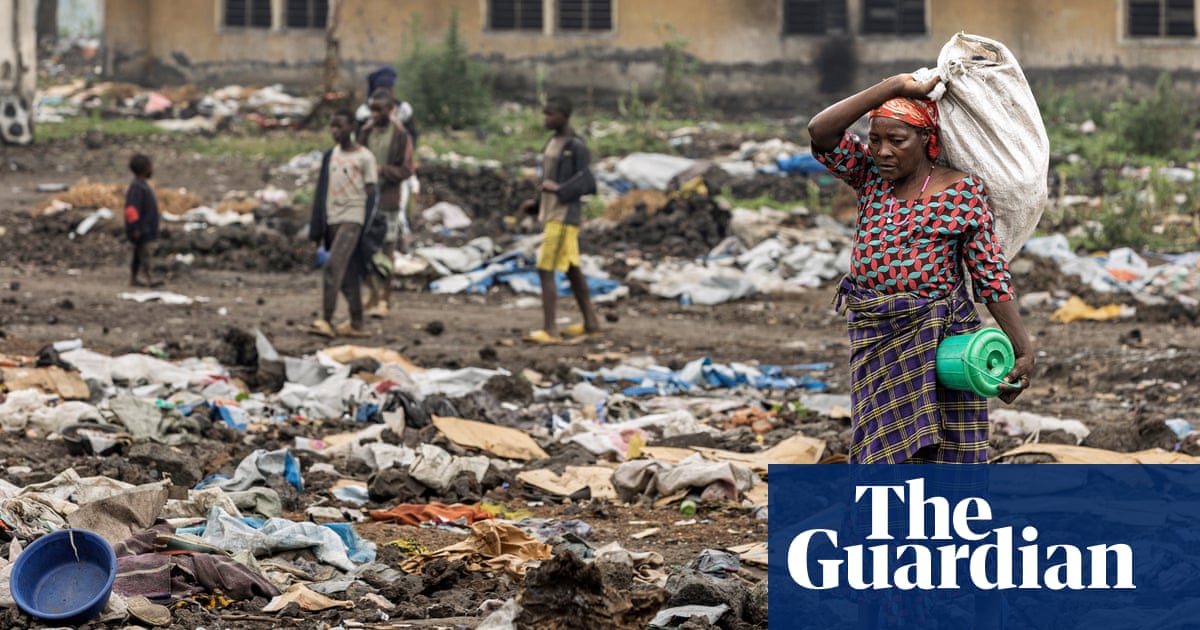
This article is part of the Guardian’s Women’s World Cup 2023 Experts’ Network, a cooperation between some of the best media organisations from the 32 countries who qualified. theguardian.com is running previews from two countries each day in the run-up to the tournament kicking off on 20 July.
Overview
For the first time since 2007 Denmark are back in the world’s finest company. Having been part of the World Cup four times, including three in the 1990s, it has been 16 years of heartbreak for the Danes. “We have been so close [to qualifying] every time but didn’t make it,” Katrine Veje told fifa.com. “Getting to the World Cup was one of the last things I wanted to check off.”
The expansion from 24 teams to 32 has definitely been in Denmark’s favour, as they were seeded first in qualification instead of the usually difficult second-seed spot. In a group with Russia (excluded halfway through qualification), Bosnia and Herzegovina, Montenegro, Azerbaijan and Malta, Denmark took charge with eight victories in eight games, scoring 40 goals and conceding two.
Starting with either a 3-4-3 or a 4-3-3, Lars Søndergaard can line up his team in different formations, using strong ball-playing midfielders in Karen Holmgaard, Sofie Junge Pedersen, Sanne Troelsgaard, Kathrine Kühl and Josefine Hasbo.
Even though Denmark have no problem keeping possession and prefer this style of play, they are not afraid to defend and go for the counterattack either. Dangerous crosses from Veje, Nicoline Sørensen and Sofie Svava on the wings are a great weapon for Denmark, who will be a threat in the penalty area with their physical abilities.
The focal point is Pernille Harder. But when she was out injured this spring, Denmark showed that even without Bayern Munich’s new signing, the team can play against some of the world’s best sides and win. Impressive successes against Norway, Japan and especially Sweden have been good for Denmark. “The victory gives us confidence and that is what we need before the World Cup,” Stine Ballisager said after the 1-0 win in Malmö. “Sweden are No 3 in the world and this result shows that we can reach that level too.”
The coach
The well-liked Lars Søndergaard will say his farewell after the World Cup. The 64-year-old has overseen the national team since December 2017. “I’ve had an amazing time and it has been an honour,” he said. Having previously coached Danish clubs such as AaB, Viborg and SønderjyskE, as well as several Austrian sides, this was his first time coaching women. He said early on that he did not see any major differences between coaching a women’s side and a men’s team, apart from one. “The female players ask a lot more questions and want to talk everything though,” he said. “It is very positive, but it was something that I needed to get used to.”
Star player

There is no doubt: Pernille Harder is not only the biggest name in the Denmark squad, but also one of the stars of the whole tournament. The 30-year-old will be playing in first World Cup. “This tournament deserves players like Pernille Harder,” Søndergaard said to Fifa, and it is no mystery why. Denmark’s long-serving captain and all-time leading scorer is a two-time recipient of Uefa’s women’s player of the year award and has twice topped the Guardian’s list of the 100 best female footballers in the world. Now she is also a World Cup participant.
Rising star
Student by day, footballer by night: not many know of Josefine Hasbo. But if you have been following US college football, and especially Harvard, you know they have a diamond in midfield. Alongside two other rising stars in Holmgaard and Kühl, the 21-year-old Hasbo is destined to be vital to the future of this Denmark side. Mostly a starter in 2023, she has impressed roligans (Denmark’s fans) with her untiring runs. She may not start every game, but she will make an impact when called upon.
after newsletter promotion
Did you know?
Denmark have won the Women’s World Cup. Albeit the unofficial one in 1970 and 1971. But it is impressive nonetheless with the final in 1971 being played in front of more than 100,000 fans in the Azteca Stadium in Mexico City. Denmark defeated Mexico 3-0 thanks to a hat-trick from 15-year-old Susanne Augustesen.
Ever since finishing runners-up at Euro 2017, women’s football has been growing exponentially and more of the top men’s clubs are considering setting up a female team. With HB Køge hosting record crowds in the Danish Women’s League and the Champions League, and the national team playing in front of 22,000 fans in the Parken Stadium, things are moving in the right direction. Despite the national team’s popularity, however, media coverage for the domestic league is not great and almost nonexistent compared with the men’s game.
Realistic aim at the World Cup?
The hope for players and fans is that Denmark will qualify from Group D and that is achievable. England are favourites but Denmark should be able to defeat Haiti and China, with the latter being their biggest competitor for a place in the knockout phase. From there, anything can happen.
Written by Sofie Engberg Munch for TV 2 Denmark.










 English (US)
English (US)